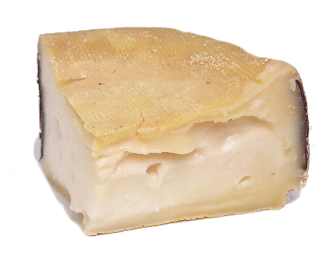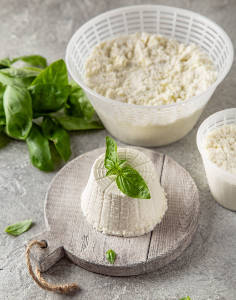Cheese Category

For substitutions for cheese in general, click here.
Our early ancestors probably discovered cheese when they first used animal stomachs to carry milk. An enzyme in the stomachs called rennet would have caused the milk to curdle and separate into cheese and a watery liquid called whey. People have been tinkering with that basic recipe ever since then, and there are now hundreds of different kinds of cheeses.
Cheese-makers impart different flavors and textures into their cheeses by using different milks, adding various bacteria and molds, aging for different lengths of time, and so forth. The pâte, or inner portion, of a cheese is normally encased in a rind. Natural rinds can be covered or mottled with mold, and they're often edible, though many people find them bitter and salty. Waxy rinds shouldn't be eaten.
Tips:
Always bring a table cheese to room temperature before serving it--the flavor is much better.
Younger cheeses tend to be mild, soft, and moist. As cheeses age, they become more pungent, hard, and crumbly.
Many cheeses become rubbery when cooked too long or at too high a temperature. If you plan to cook with a cheese, select a heat-tolerant one like mozzarella or Emmental.
It's usually best to store cheese in its original packaging. If the cheese has been cut, wrap it tightly in plastic wrap to hold in the moisture. If it hasn't been cut, wrap it first with waxed paper and then with plastic wrap--this allows the cheese to breathe.
Store cheese near the bottom of the refrigerator, where temperature fluctuations are minimal. Harder cheeses have a longer shelf life than soft, moist ones.
Most cheeses don't freeze well. One exception is Mozzarella.
Just as you'd ask your fishmonger "What's fresh today?" ask your cheese provider "What's ripe today?" Under-ripe cheeses haven't fully developed their flavor, while overripe cheeses become acidic and unpleasantly pungent. Some overripe cheeses develop a strong ammonia smell.
If a small amount of mold forms on the surface of a cheese, cut it off along with a half an inch of cheese on all sides of it. If mold forms on a fresh or soft cheese, or if there's a lot of it on a firmer cheese, throw the cheese out.
Many lactose-intolerant people find that they can tolerate low-lactose cheeses like cream cheese, cottage cheese, Mozzarella, and Provolone.
Cheese doesn't pair well with citrus or tropical fruits.
Cheese is usually made with pasteurized milk, which has been heated to remove harmful bacteria. Unfortunately, pasteurization also destroys friendly bacteria and enzymes, though some of these can be added back artificially once the milk is pasteurized. Some producers make cheese with raw (unpasteurized) milk, believing that this gives their cheese richer microflora and better flavor and textures.
Varieties:
Fresh Cheeses, Soft Cheeses, Semi-soft Cheeses, Semi-firm Cheeses, Firm Cheeses, Blue Cheeses, and Processed Cheeses.
Cheeses can also be classified according to the type of milk used. Richest and creamiest of all are cheeses made with sheep's milk. Cheeses made with cow's milk have less butterfat, but they're usually cheaper than those made with sheep's milk. Goat's milk lends cheese a tangy, earthy, and sometimes barnyard flavor.














































































































































































































































































































































